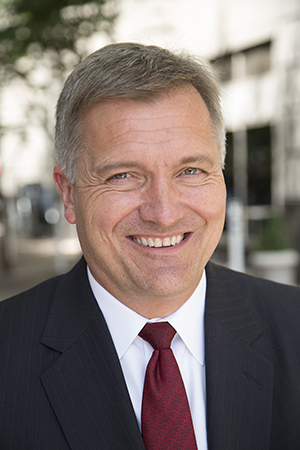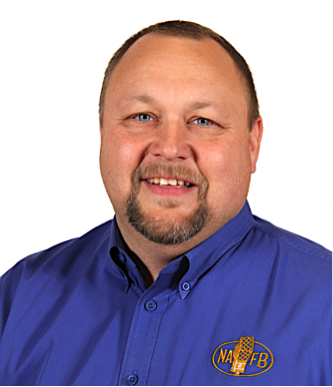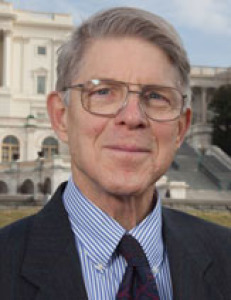Congress and the Federal Communications Commission are under increasing pressure to expand high-speed internet service to cover all of rural America.
Making the connection won’t be easy or cheap. But if Microsoft is right, the rural/urban broadband gap could be eliminated within five years.
One point of agreement among those pushing for rural broadband is that both federal loans and grants will be essential to reach an estimated 23.4 million rural residents with slow or no internet connection. There’s also agreement that USDA’s Rural Utilities Service loan programs and the FCC’s Universal Service Fund grants can’t keep up with current demand.
Expansion proponents also agree that the speed and price for rural internet should be comparable to what urban subscribers enjoy.
National Rural Electric Cooperative Association (NRECA) CEO Jim Matheson is hopeful that Congress will include new support for rural broadband in this week’s omnibus funding legislation, even if it’s less than the initial $2.5 billion that NRECA would like. He’s also hopeful that the farm bill and promised infrastructure legislation will add even more federal support.

Jim Matheson, NRECA
Matheson tells Agri-Pulse that USDA’s current loan program “serves some areas, but for the less populated areas, it’s going to take a loan/grant combination to make it work.”
“Without access to high-speed internet, rural communities are being left behind in the 21st century economy,” Matheson says. Insisting that rural broadband expansion “should be a top economic development priority,” he says, “We look forward to working with the Trump administration and Congress to address this problem.”
NRECA’s member co-ops feel the same. After his meetings last year with Missouri Gov. Eric Greitens and the state’s two senators, Republican Roy Blunt and Democrat Claire McCaskill, Association of Missouri Electric Cooperatives CEO Barry Hart said “Some people think rural areas do not need the same speed cities need. That is false. We have courthouses, healthcare clinics, farms, businesses, schools that need high-speed internet.”
Ag Secretary Sonny Perdue is another fan of expanding rural broadband. In last week’s Senate Commerce Rebuilding Infrastructure hearing, he testified that “One of many beneficiaries of broadband e-connectivity will be farms. Precision agriculture technologies are growing in popularity for their ability to improve farm management decisions, for increasing production and reducing input costs. Modern farming technologies include precision planting, fertilizing, spraying, and irrigation.”
Perdue added that “USDA researchers have estimated that the cost savings from use of these precision agriculture technologies in corn production ranged from $13 to $25 per acre. In addition to ‘smart farms,’ smart forest, smart factories, and smart transportation will also be an economic game-changer for rural economies – all requiring full-deployment e-connectivity to high-speed internet, far beyond what is available in rural America today.”
One possible solution comes from Microsoft. The software giant expects that by partnering with local internet providers, its Rural Airband Initiative will provide high-speed internet service for 2 million people in rural counties by 2022. Microsoft’s plan is to use what’s called TV White Spaces spectrum – unused “white spaces” between TV channels – to broadcast internet service, with speeds of 25 Mbps downstream and 3 Mbps upstream.
In one of 12 current projects from Arizona to Maine, Microsoft has partnered with Packerland Broadband to connect 33,750 people in rural Wisconsin and Michigan by the end of 2019, and 82,000 by 2022. It’s all part of Microsoft President Brad Smith’s goal “to eliminate the rural broadband gap’’ by July 4, 2022.
The game-changer, Smith says, is that using the TV white spaces spectrum in the 600 MHz frequency range “enables wireless signals to travel over hills and through buildings and trees.” Answering skeptics who charge that Microsoft’s approach is untested, Smith replies that Microsoft “has deployed 20 TV white spaces projects in 17 countries that have served 185,000 users.”
Smith says connecting rural America calls for a mix of technologies: “TV white spaces will provide the best approach to reach the 80 percent of this underserved rural population that live in communities with a population density between two and 200 people per square mile. Satellite coverage should be used for areas with a population density of less than two people per square mile, and fixed wireless and limited fiber to the home should be used for communities with a density greater than 200 people per square mile.”
Planning on its pioneering efforts attracting both private investment in broadband and additional federal support, Microsoft calculates that “the total capital and initial operating cost to eliminate the rural broadband gap falls into a range of $8 to $12 billion. This is roughly 80 percent less than the cost of using fiber cables alone, and it’s over 50 percent cheaper than the cost of current fixed wireless technology like 4G.”
The National Association of Broadcasters isn’t convinced. NAB’s sharp response is that “Microsoft is lobbying Congress and the Federal Communications Commission for free TV airwaves to operate unlicensed devices. Microsoft claims this would unlock broadband for rural America, but it won't. Instead, it will put rural Americans’ lifeline local TV service at risk.”

Tom Brand, NAFB
National Association of Farm Broadcasting (NAFB) Executive Director Tom Brand acknowledges that rural Americans definitely “want an opportunity to connect just as fast as your city cousin.” But he adds that rural radio and TV broadcasters also want to make sure that “the broadcast space is protected for current users as well as future users.”
Brand insists that since broadcasters pay annual licensing fees, the same should apply to Microsoft and any other new competitors.
Lance Knudson, owner and general manager of the American Ag Radio Network in Fargo, N.D., tells us that there’s no need to rush into broadband legislation or new FCC regulations. First, that’s because “Microsoft hasn’t proven that this will work on a large scale.” Second, he says, “this could potentially be unregulated competition.” Third, “as radio and television station owners, we pay licensing fees, we’re regulated, we build towers, we put out these signals” yet potential unregulated white-space users “want to use that space for free,” adding, “I don’t think that anybody who owns a TV or radio station is OK with that.”
Knudson’s final reasons to at least slow down the rush to rural broadband are that “most of us don’t need high-speed internet,” that “most rural people already have some form of internet service anyway,” and “the ones who don’t have it, probably don’t want it.”
For more news, go to www.Agri-Pulse.com


